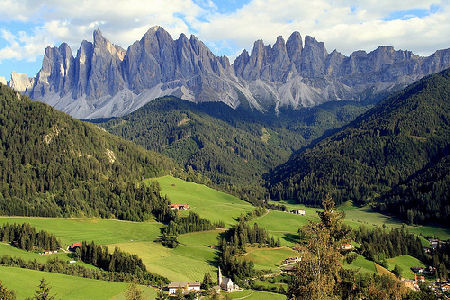So how do we define a green fund?
It is a good question, and a very important one as well.
As caring investors, we are inundated with information about all sorts of funds which make it their priority to invest in responsible companies that try to do no social harm.
Indeed, socially responsible investing is a very wide area.
 Japanese Garden, California
Japanese Garden, California© Randy
Many funds promote themselves as socially responsible but we certainly don’t always know just what it means. We discuss different terms used to describe responsible investing here.
As part of responsible investing, green investing is often described as investing in companies which work towards actively improving the health of the environment.
In other words, green companies are developing new technological solutions for solving major environmental issues such as pollution and global warming.
Therefore, a green fund (also called green mutual fund) is an instrument for making collective investments in these environmentally active companies which introduce new green technologies.
There are many interesting industries in which a genuinely green mutual fund would normally invest:
- Renewable energy, incl. solar, wind, geothermal, biofuel technologies
- Energy efficiency solutions
- Green transport
- Green building / construction
- Wastewater management
- Pollution control
- Reforestation
- Recycling
Of course, it is not an exhaustive list, just an indication of where your money would most likely go if you decided to invest in green mutual funds.
There are many types of green investment such as stocks, bonds etc.
But why invest in a mutual fund rather than, for example, directly in green stocks?
Why a Mutual Fund?
Here is a definition of a mutual fund as provided by US Securities and Exchange Commission: (Ref. 1)
A mutual fund is a company that pools money from many investors and invests the money in stocks, bonds, short-term money-market instruments, or other securities.
Probably the most important benefit gained as a result of investing in a mutual fund (as compared to individual stocks) is diversification.
In other words, don’t put all your eggs in one basket – put them in many different ones!
Your green mutual fund manager will select a portfolio of green stocks, bonds and other instruments and thus guarantee that such investments will be much safer for you to hold (though with a smaller expected return) than investing in individual companies.
The only thing you will need to do is buy shares in a mutual fund of your choice, which will entitle you to own a portion of the fund’s holdings.
You will also need to pay your fund manager’s annual fees which can reduce your potential earnings.
But there is no doubt that if you are a risk averse investor, green mutual funds may be a very good investment option for your needs.
Choosing a Genuinely Green Fund
In one word, if you want to put your money in a truly green fund, there are two things you may want to look out for:
- The scope of a fund’s investments in environmentally active companies, and
- The fees the fund will charge for managing your account.
 Italian Landscape
Italian Landscape© Luigi
As we discussed above, it is easy to confuse the funds which are socially responsible (covering a much wider universe of investments) with purely green funds.
So if you want to invest in a purely green mutual fund, you should analyze this fund’s policies and specific industries it is covering, and look carefully at its current holdings to make sure you are satisfied with this fund’s offers.
Another important point to remember is the amount of fees charged by a certain fund, and you should obviously shop around for cheaper ones.
But of course we all need to remember that green funds are, well, still very “green” and this is very much an emerging sector which needs to be approached with a certain degree of caution.
This means that our risks of investing in green funds may generally be higher than those for funds which invest in more established industries, but at the same time we may well expect higher returns in the future.
So it is important to assess our own financial needs and risks we are comfortable with, and make our investments accordingly.
Conclusion
There is no doubt that we are now experiencing a steep rise in demand for not only renewable energy sources but also many other environmentally friendly technologies and services alike.
This means that we will most likely see more green companies and more green stocks and other types of securities appearing on the market in the near future.
If the global green sector really grows as expected, we may expect to see many new green funds offered by financial institutions.
And this should provide green investors with a better choice of truly green funds to put their capital in.
Written by: Irina Bright
Original publication date: 2008
Republication date: 2020
References
1. U.S. Securities & Exchange Commission (2007). Mutual Funds. Retrieved October 15, 2008 from http://www.sec.gov/answers/mutfund.htm